Ghosts of the West Coast
Marcia wonders whether the West Coast Orca population can make a comeback
Orcinus orca are otherwise known as the Orca or Killer whale, not because they are a danger to humans (despite recent events in the Mediterranean), but because they’re killers of whales. In my opinion they are probably the most charismatic inhabitants of the sea by far. They are the largest members of the dolphin family and easily recognised by their black and white colouring and large dorsal fins.
My obsession with this species started when I was a kid in the 90’s with the release of ‘Free Willy’ and was cemented a few years later with a trip to ‘Seaworld’ in Florida to see them in real life (don’t judge me, I was only 10!). Little did I know at the time that I could find them cruising freely just off our very own Scottish shores. Not only would this have saved some money and air miles, but could have changed the trajectory of my future career. Why did nobody tell me there were killer wales in Scottish waters!? It was probably because at the time, we knew very little about them.
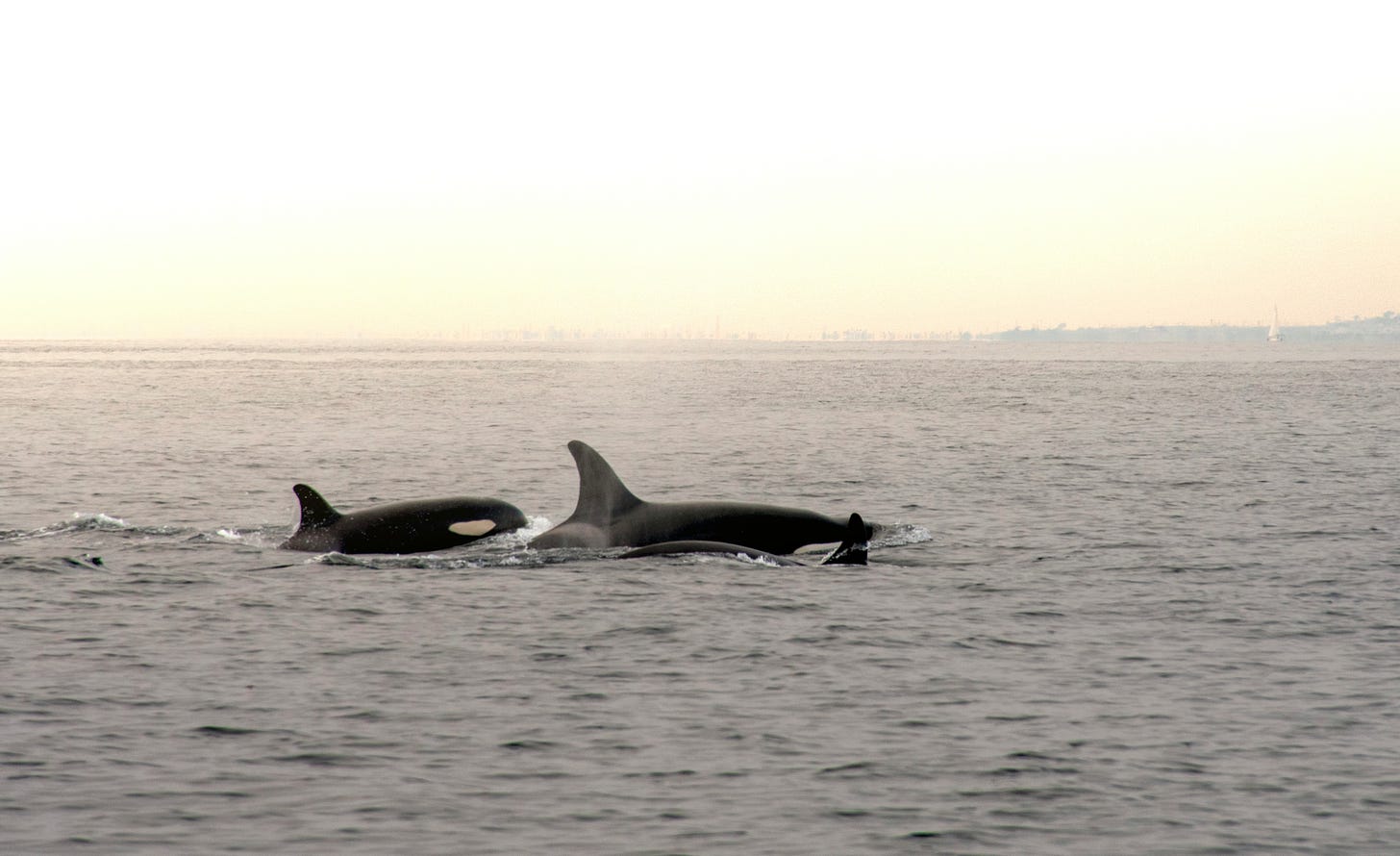
What we know now is that there are two communities found along our coastline. The North Island Community, frequently seen off the coast of Orkney and Shetland, with a varied diet of sea birds, seals and fish. And the West Coast Community, frequently seen around the Hebrides and as far south as England in recent years, this community seems to feed solely on other cetaceans.
Neither of these communities show any signs of interacting with one another, leading to distinct populations. Although the northern populations appears healthy, there is a startling lesson to be learned from the west coast community. This is their story.
The largest of the west coast community John Coe was first documented in the 90’s at the same time I was falling in love with his species. He was thought to be 10 or more years old at that time.
By 2006 there was still little known about population, but they were thought to be up to 10 individuals both male and female. Research by Dr. Foote identified them as unique from their northern cousins as they were larger, consistently 1 metre bigger, and had a distinctive eye patch orientation.
In 2008 one of the males was washed up on Lewis, this was thought to be a member of the community called Moon. He was found with characteristic tooth wear from hunting cetaceans and there were the remains of minke whale baleen in his stomach.
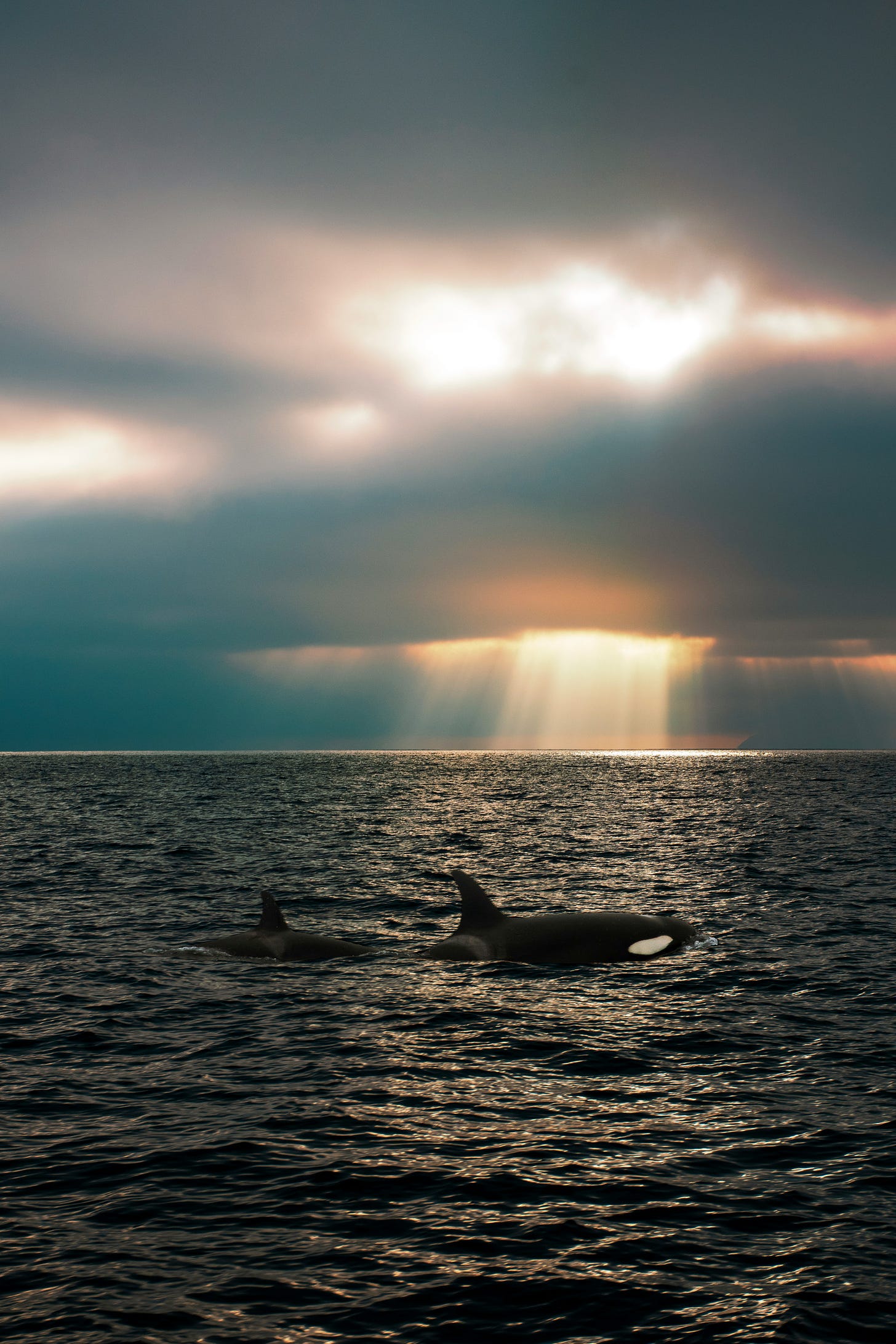
In 2016 it was established that the lone male who swam up the River Foyle in the late 70’s was one of the west coast community. At that time he was estimated to be fully grown, meaning that in 2016 he would be around 60 years old.
Also in this year a female was found washed up on the island of Tiree, this was thought to be Lulu, the last recorded female of the group. This is where the story takes a really tragic turn. Lulu was found entangled in fouling from fishing creel gear and it was thought that this was her primary cause of death.
This is already a sad statement of the state of our seas, but there was more. Chemical testing of Lulu revealed that she was the most contaminated whale ever recorded in the world.
Let that sink in.
Her body contained 100 times what is thought to be the safe level of persistent chemicals from the environment and her body had to be treated as toxic waste.
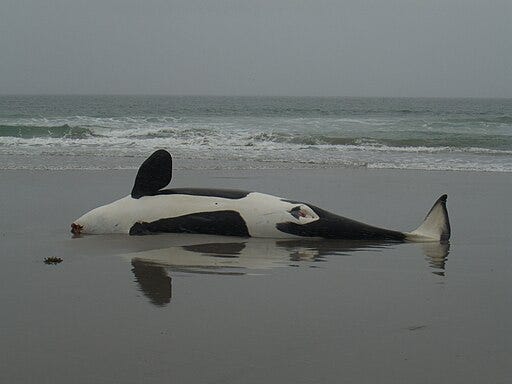
Top predators like killer whales are particularly vulnerable to accumulating pollutants within their body mass. This is a process called biomagnification. Pollutants are absorbed at the base of the food chain but are spread across thousands of individuals so each has a relatively low dose, however as you go up the food chain each animal needs to eat more prey species to survive and the pollutants from these are absorbed into their bodies. For long lived species this accumulation results in the levels seen in Lulu, these pollutants cannot be processed by the body.
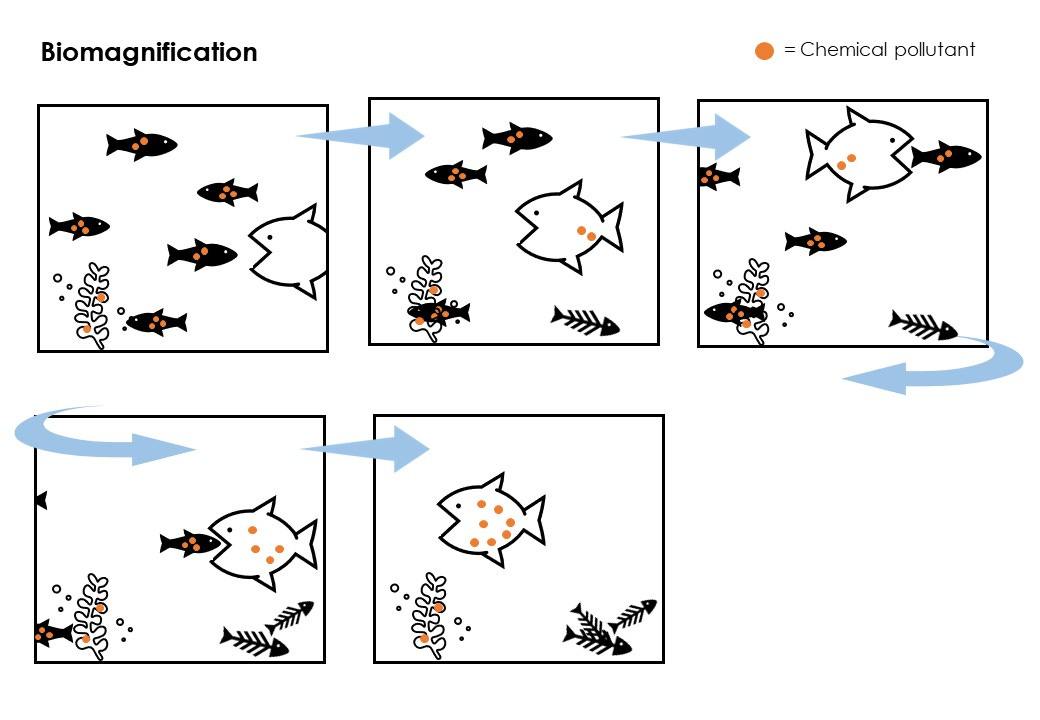
It’s likely that the massive load of chemicals in Lulu’s system affected her ability to reproduce and continue the west coast population. She was thought to be 20 years old when she died, but she had never produced a calf. In fact in the 25 years that the west coast population have been monitored there has not been a single calf recorded.
Since Lulu’s death only two members of the west coast community have been seen, John Coe and Aquarius, both male. They have become local celebrities and are still seen along the west coast of the country and occasionally in the north east, however the story of this community is one of human derived pollutant contamination and ultimate extinction. The impacts of our actions long before we knew what we were doing are still being felt by our fellow species today.
So, where do we go from here? If there’s anything we can take away from the story of the west coast orcas, it’s that we still have time to protect these astonishing animals and their habitat. Thanks in part to conservation efforts, we’re beginning to see more sightings along the Scottish coast, a hopeful sign that some marine mammal populations are bouncing back from the brink. Whale populations across the globe have been steadily recovering from intensive whaling practices in the past, but our work isn't over. Pollution, entanglement, and habitat degradation are ongoing threats and stressors, and each of us has a role in turning the tide. Whether it’s reducing plastic use, supporting marine protection zones, or spreading awareness, every action counts. Let’s protect Scotland’s seas to keep these majestic animals splashing through our waters for generations to come.
Marcia O'Hara is High Life Highland's dedicated Countryside Ranger for Easter Ross and South East Sutherland. She infuses her love for nature into every aspect of her work, from community clean-ups to guided events and workshops. With an academic foundation in Environmental Biology, Marcia excels in bringing fresh perspectives to her sessions, making science come alive in community learning. Known for her ability to engage and inspire, Marcia has a special interest in woodland botanics, including fungi, lichen, and trees. Her unique approach and deep connection to nature have made her an invaluable asset in preserving the natural beauty of the region she covers.
If you would like to find out more about the other whale and dolphin species you can spot around the coast of the Highlands, why not join us for our online talk North Coast Splashes on Thursday 28th November 19:00 - 20:00 GMT

In this talk I’ll aim to dive a little further into the fascinating lives of the marine mammals gracing Scotland’s rugged northern coast. From dolphins and porpoises to the mighty whales, discover the incredible adaptations that allow these creatures to thrive in the dynamic waters of the North Atlantic. I hope by attending you'll gain a deeper appreciation for these remarkable creatures, understand the challenges they face, and learn how to spot them along our shores.
If you book but cannot attend we will send you a recording of the talk afterwards so you can watch at a later time.
This talk will be on Microsoft Teams.
We ask for donations for this event to help with our work, which goes towards education about and protection of the nature of the Highlands. Please give what you feel you can afford. We suggest a minimum donation of £5 per person to cover our costs or £10 per person to further support our work.
* Please be aware that there is a minimum donation of £1 required to book on via Eventbrite. This does not go to the Ranger Service but is to cover Eventbrite Fees.*




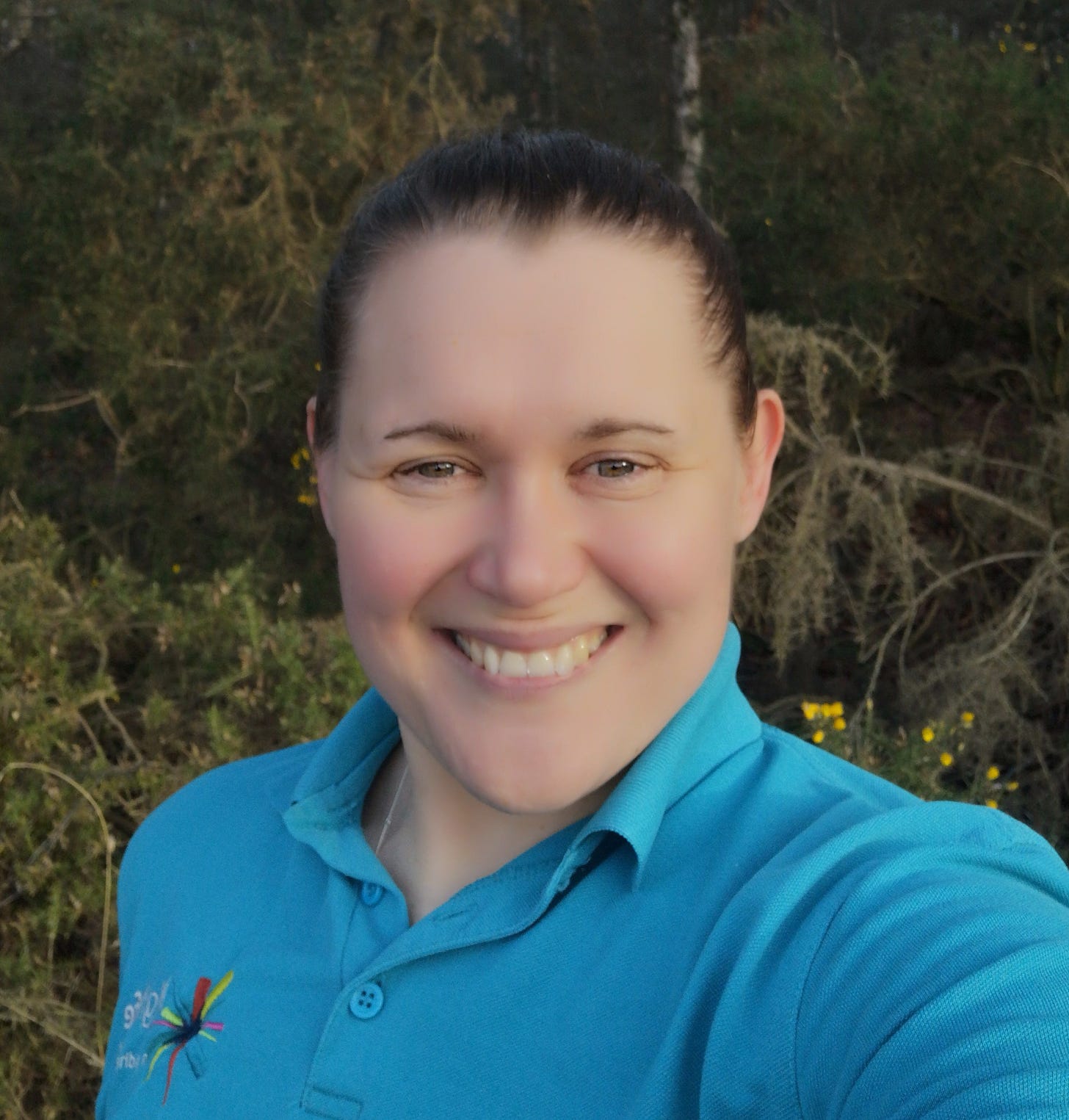
Fascinating article! I grew up in the American Pacific Northwest, where we have a relatively large resident Orca population plus some 'wandering' orcas which come into Puget Sound on their travels up the coast. I would guess that the American orcas are dealing with the same problem of toxin magnification- parts of Puget Sound, at least, are very polluted thanks to industry in the big cities Seattle, Tacoma etc. I hope that we are able to somehow deal with ocean pollution before the effects are irreversible. Interesting to hear about these beautiful whales from another part of the world.
This is tragic and terrifying. Yet hope remains. Thank you for sharing your work.